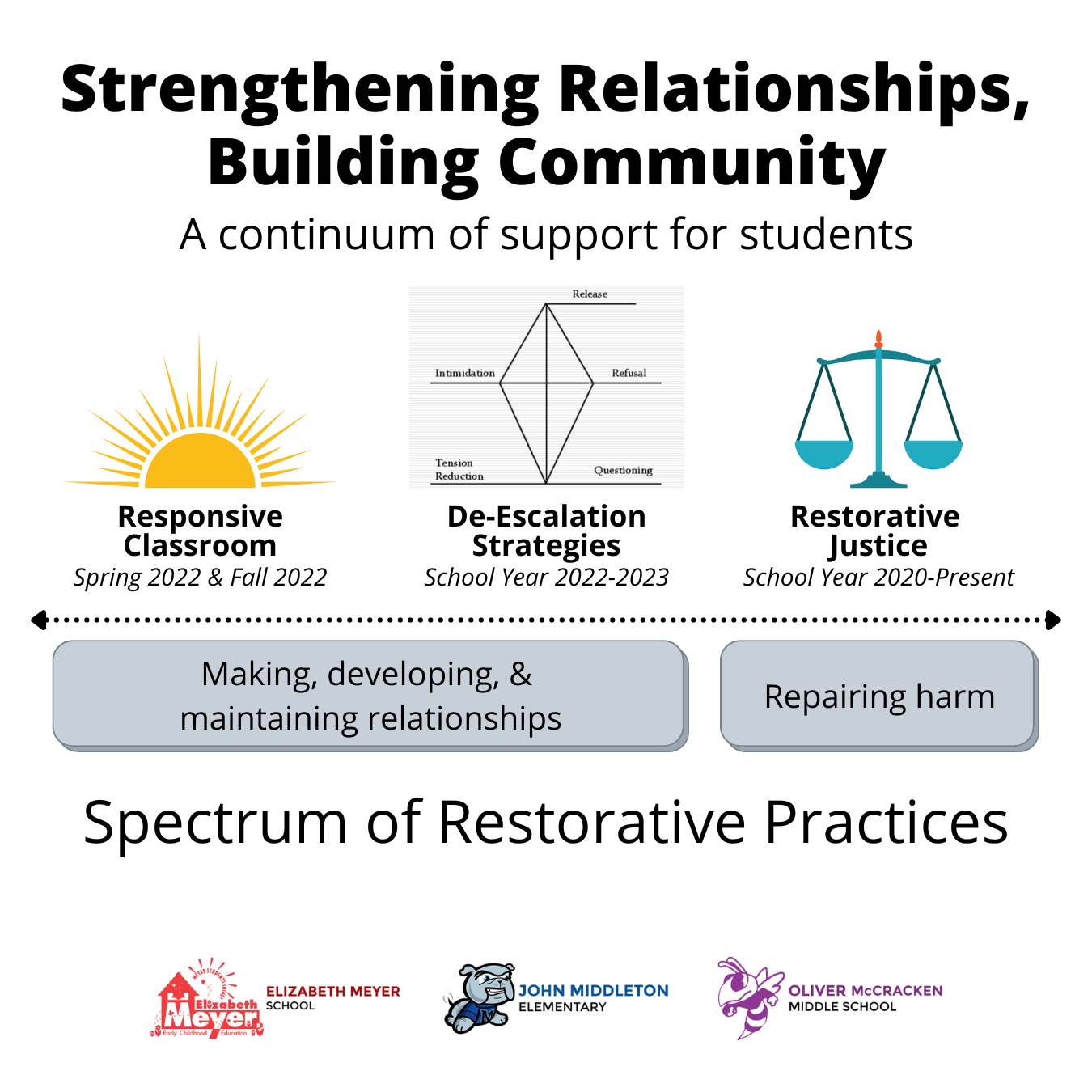Restorative Practices
Restorative practices repair harm, rebuild relationships, and re-establish trust when conflicts and issues arise within a community.
Restorative practices build community and belonging through establishment of caring relationships among students and between students and teachers. Proactive restorative practices (i.e. proactive circles) provide the opportunity to increase academic engagement, appropriate behavior and accountability.
“As a consequence of fostering relationships and a sense of belonging, academic performance also flourishes.”
Reactive restorative practices are the strategies used in creating solutions for making things right, rather than assigning blame and seeking justification for behavior. Restorative practices are about creating a feedback loop so that people can hear how an individual’s actions have affected others and encourage them to take responsibility for those actions. Restorative practices involve including all voices and ensuring that we are doing things with students and not to students. ~Costello, B., Wachtel, J., & Wachtel, T. (2019). The restorative practices handbook. International Institute for Restorative Practices.
Restorative Practices Principles
- Acknowledges that relationships are central to building community
- Builds systems that address misbehavior and harm in a way that strengthens relationships
- Focuses on the harm done rather than only on rule-breaking
- Gives voice to the person harmed
- Engages in collaborative problem solving
- Empowers change and growth
- Enhances responsibility
Social Emotional Learning
The Illinois State Board of Education (ISBE) defines Social and Emotional Learning (SEL) as "the process through which children and adults acquire the knowledge, attitudes, and skills they need to recognize and manage their emotions, demonstrate caring and concern for others, establish positive relationships, make responsible decisions, and handle challenging situations constructively."
The Skokie School District 73.5 Social Emotional Learning curriculum follows the Illinois State Board of Education standards for SEL.
This site provides information using PDF, visit this link to download the Adobe Acrobat Reader DC software.

